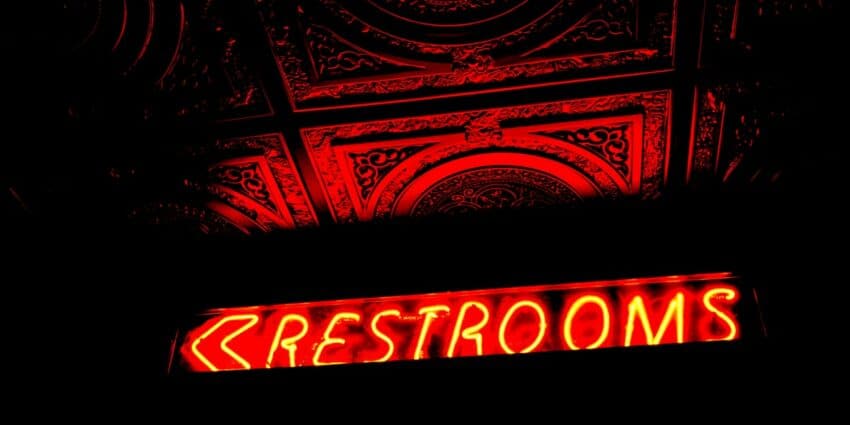There is a lot on your plate if you manage an office building, but keeping restrooms clean and functional are among the most important of all maintenance tasks. Workers and visitors in your building may overlook other minor cosmetic problems, such as an occasional smudged window; however, a dirty or out-of-order restroom will quickly lead to irritation.
That’s why you should make restroom maintenance a priority as a building manager. Doing so requires a strategic approach and understanding of what it takes to keep restrooms in tip-top shape. Below are a few ideas that will help you provide top-notch restroom facilities for employees and guests alike.
Understand Important Restroom Comfort and Convenience Factors
An office building restroom can be a challenging space to manage. The typical restroom, especially one in a facility that serves a diverse group of employees and members of the public, experiences heavy traffic volumes. That factor alone makes them vulnerable to becoming dirty or damaged.
However, when you add in the presence of water, bodily wastes, as well as paper trash and other soiled materials, restrooms can quickly become filthy, uninviting spaces. Restroom users demand that facilities be kept in a certain condition, or they will refuse to use them. This could be more than an inconvenience to users, as dirty or unavailable restrooms can hurt the bottom line of your business and the business of tenants and other building stakeholders.
To make restrooms inviting to users, there are a few, key conditions that should be provided by building managers:
- Clean – A restroom should be kept clean from top-to-bottom, with special emphasis placed on plumbing fixtures, the floor, and counter spaces. Porcelain should sparkle, and trash containers should never overflow. In addition, floors must not only be kept clean but dry, since wet surfaces pose slipping hazards and are also a major turn-off to people who are forced to walk across them.
- Well-Supplied – A restroom should be kept well-supplied with necessary amenities, such as toilet tissue, paper towels, and hand soap. A failure to provide any of these things sends an unintended message of neglect and could even threaten the health of users forced to do without.
- Operational – A restroom must be operational to be inviting. For example, both cold water and hot water should be available at sinks. Broken towel dispensers, missing toilet tissue roll holders, and defective faucet aerators that splash or spray are just a few operational problems that can make a restroom uncomfortable and frustrating to use.
Implement a Strategic Maintenance Plan
To make restroom maintenance everything it needs to be, there are multiple levels of attention that need to be provided on an ongoing basis. It isn’t practical to fully clean each restroom on an hourly basis, but you can provide a superb restroom “experience” by layering necessary maintenance and care. Here are some specific ways to accomplish this from a strategic perspective.
Ongoing Cleaning
Restrooms should be monitored on at least an hourly basis by a designated person or group of persons. While assigned individuals aren’t to be tasked with deep cleaning activities, they should have a checklist of critical maintenance concerns to be addressed.
For example, restrooms should be checked for adequate supplies of toilet tissue, paper towel, and soap at regular intervals, and assigned personnel should be able to quickly refill any missing items. In addition, assigned staff should have access to supplies needed for cleaning unsightly messes or spills and wiping down surfaces as needed.
Daily Cleaning
At the end of the day, or whenever the restroom experiences a natural “downturn” in usage, it will need to be cleaned on a deeper level than what can be accommodated during hourly maintenance checks. Such cleanings are often assigned to a cleaning contractor or other janitorial specialists.
The specifics of these deep cleaning sessions may vary somewhat depending on your specific facility requirements, but, in general, they comprise mopping floors, scrubbing toilets and urinals, cleaning and wiping counters, sinks, and fixtures, and removing trash. In addition, all functional restroom items should be tested for proper operation and the appropriate maintenance personnel contacted if something is broken.
Weekly Cleaning
Once per week, restrooms should be given extra cleaning attention beyond what can be performed on a daily basis. These cleaning sessions are meant to prevent the long-term decline of a restroom’s functionality and overall cleanliness.
For example, a weekly cleaning session could include wiping down of stall walls, dusting, cobweb removal and light fixture cleaning. In addition, you may need to incorporate a floor scrubbing regimen that uses mechanical cleaning to remove stubborn, ground-in dirt or stains, particularly if your restroom contains grouted tile.

